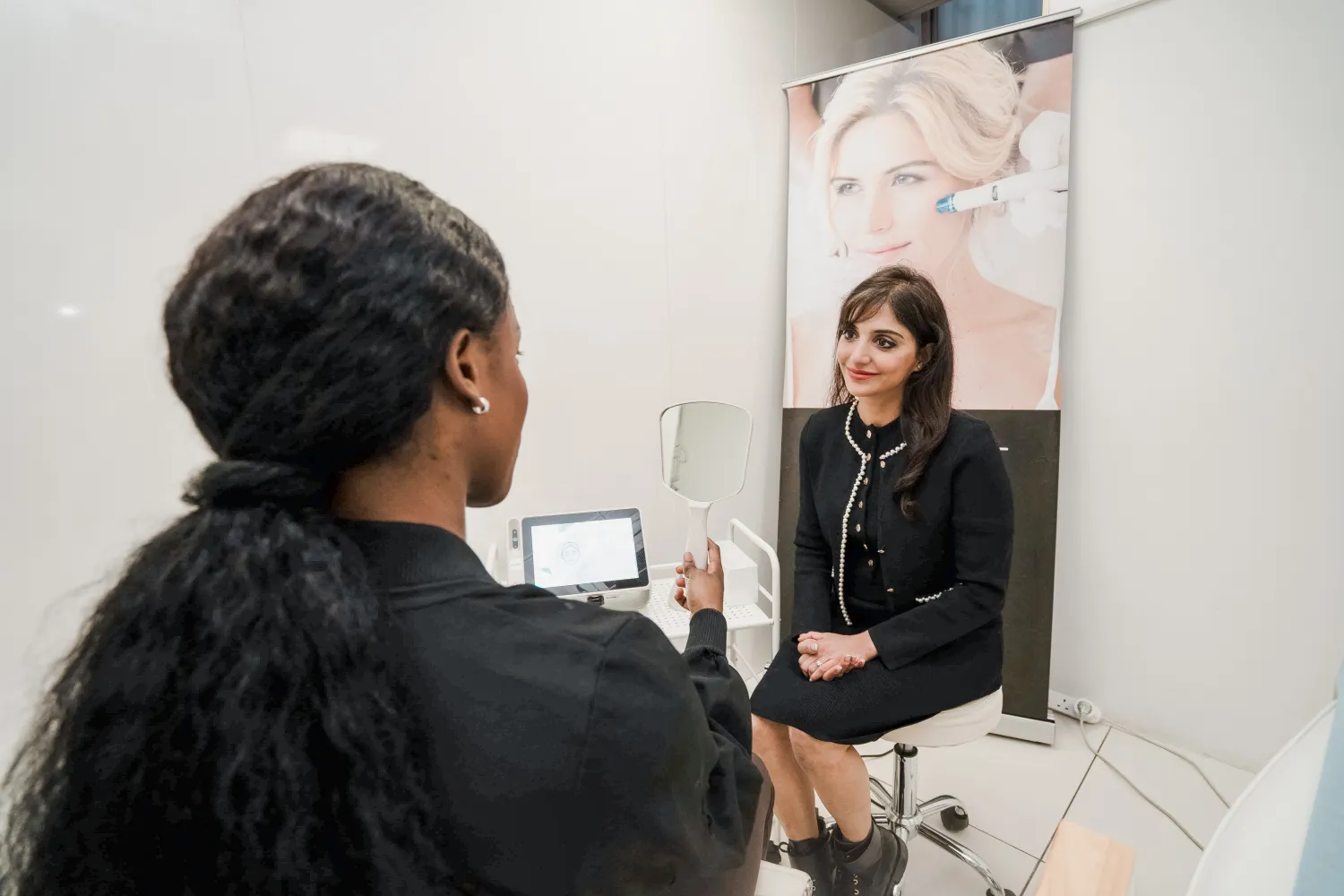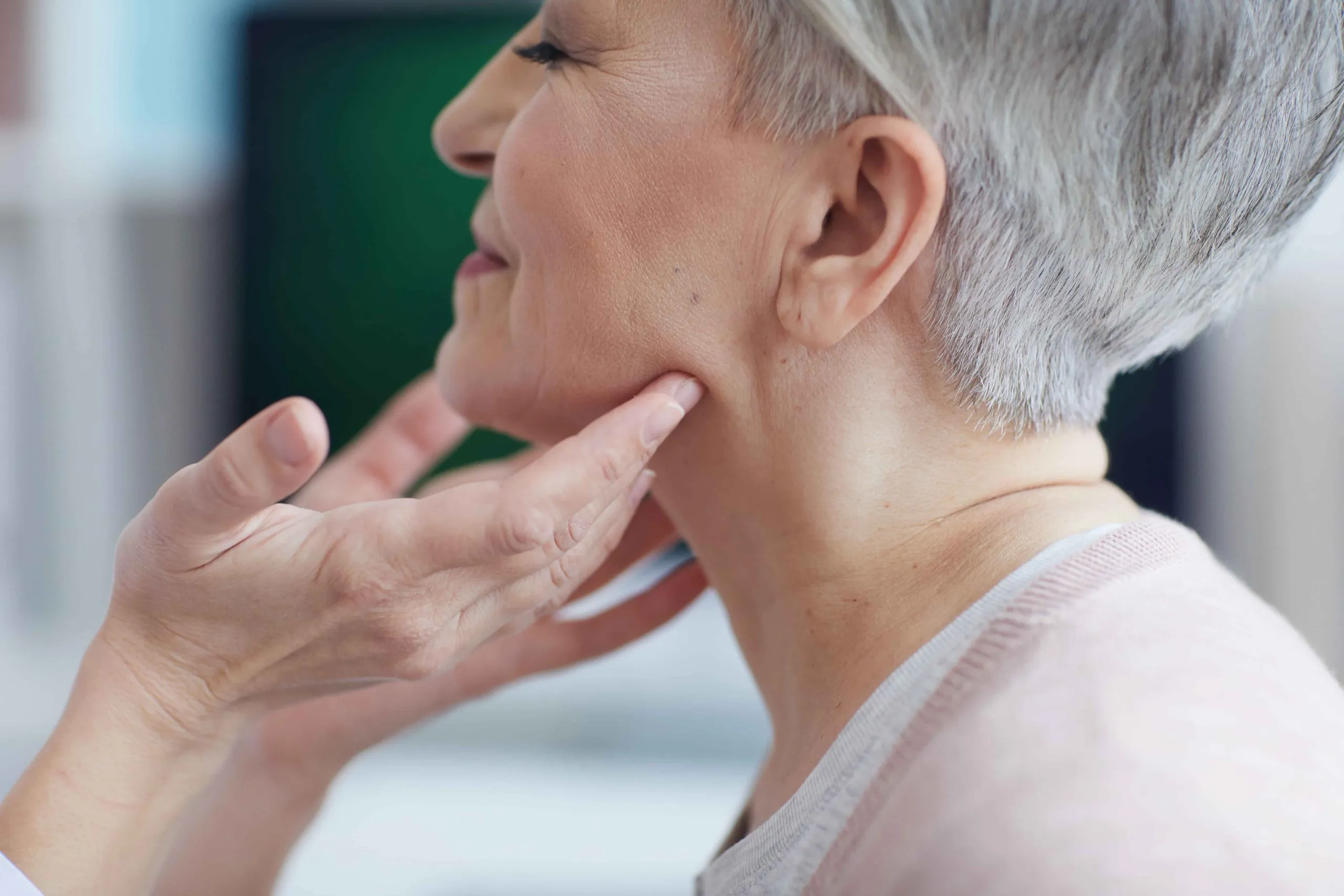Is your forehead getting bigger—or is your hairline getting smaller?
It’s a question many of us ask while staring into the mirror, noticing subtle but steady changes in our hairline. For some, it’s just a slightly higher temple, for others, it’s a clearly M-shaped pattern creeping upward.
Hair loss can affect anyone, but one of the earliest and most noticeable signs is a receding hairline. While it’s often considered a normal part of ageing, a receding hairline can also be triggered by other factors like genetics, stress, hormonal changes, or even lifestyle habits.
In this blog, we’ll explore what causes a receding hairline, the symptoms to look out for, and the various treatment options available—from medical solutions to natural remedies. Understanding what’s happening to your hair is the first step toward managing it effectively.
What Is a Receding Hairline?
A receding hairline refers to a type of hair loss where the hair at the front of the scalp—especially near the temples—starts to thin and gradually shift backward. This often results in a higher forehead and forms a noticeable “M” or “V”-shaped hairline. It’s often one of the earliest signs of androgenetic alopecia (commonly known as male or female pattern baldness), though it can also stem from other causes.
While it’s more common in men—often starting in their 20s or 30s—women can experience it too, especially after menopause or due to hormonal shifts. The progression varies: for some, it’s a slow creep; for others, it advances more rapidly.
Stages of a Receding Hairline
A receding hairline is often the first clue that male pattern baldness is beginning—and it tends to follow a clear pattern over time:
- It usually starts at the temples, where the hair begins to thin and move backwards. This can look a bit uneven at first.
- As it progresses, the hairline takes on an “M” shape—more hair is lost at the sides than in the middle.
- Around the same time, thinning or a bald spot often appears at the crown (top/back of the head).
- Over time, these two areas—front and crown—start to connect, leaving a larger bald patch.
- Eventually, the hair on the top of the scalp may disappear almost entirely, leaving behind a band of hair around the sides and back of the head—commonly known as the “horseshoe” pattern.
What Causes a Receding Hairline?

A receding hairline can happen for several reasons—some within your control, others tied to your genetics. Here are the most common causes:
Family History (Genetics)
If hair loss runs in your family, there’s a strong chance you might experience it too. Both men and women can inherit this tendency. In these cases, hair follicles gradually shrink over time, eventually stopping new hair growth. The pattern and timing of hair loss often mirror what previous generations experienced.
Hormonal Changes
One of the main culprits is a hormone called DHT (dihydrotestosterone). It affects hair follicles by making them smaller and weaker, especially at the hairline and crown. Over time, this leads to thinner hair and eventual hair loss.
Age
As we age, hair naturally becomes finer and grows more slowly. It’s common for the hairline to recede gradually as part of the ageing process.
Medical Treatments & Medications
Certain medications can trigger hair loss as a side effect. Chemotherapy is a well-known example, but other drugs—like those for blood pressure, depression, or heart conditions—can also impact hair growth.
Lifestyle Habits
Poor nutrition, smoking, lack of sleep, and high-stress levels can all play a role in weakening hair health. These lifestyle factors don’t usually cause hair loss on their own, but they can speed up the process if you’re already genetically prone to it.
Hairstyling and Physical Stress on Hair
Wearing tight hairstyles (like braids, ponytails, or buns) for long periods can cause tension on the hairline, leading to a condition called traction alopecia. Over time, this can make a receding hairline worse.
Common Signs & Symptoms of Receding Hairlines
Wondering if your hairline is changing? These signs might confirm it:
- Visible thinning at the temples.
- Hairline starting to form an “M” shape.
- More hair shedding during showers or brushing.
- Scalp becoming more visible at the front.
- Hair growing slower or finer in certain areas.
- Circular or patchy bald spots on the scalp, beard, or eyebrows.
- Itching or discomfort before hair falls out.
- Sudden hair shedding after physical or emotional stress.
- Patches of scaling on the scalp, sometimes with redness, broken hairs, or swelling.
How Is a Receding Hairline Diagnosed?
If you’re noticing changes in your hairline or hair loss, it’s best to visit a doctor to find out what’s really going on. They’ll start by asking about your medical history and whether anyone in your family has experienced hair loss. Then, they’ll closely examine your scalp to look for patterns or signs of thinning.

Book your personalised consultation with our expert team
- Advanced non-surgical aesthetic treatments for face and body
- Personalised treatment plan created using our cutting-edge OBSERV Face Scan
- Led by experienced doctors with a "Safety First" approach
One simple test they might do is called a pull test—they gently tug on a few hairs to see how many come out and how easily they shed.
In certain situations, your doctor might remove a tiny piece of skin or a few hairs from your scalp—this procedure is known as a biopsy. This helps them check for any infections or underlying skin conditions that could be causing hair loss.
You might also be asked to get a blood test, especially if there’s a chance your hair loss could be linked to thyroid issues or other health conditions.
How Is a Receding Hairline Treated?
Treatment for a receding hairline depends on what’s causing it. If it’s just a natural part of ageing and not linked to an illness or infection, you may not need treatment at all. But if there’s an underlying medical reason, your doctor may recommend specific treatments or medications to help slow or reverse the hair loss.
Medications
There are several medications—both prescription and over-the-counter—that can help:
- Minoxidil (Rogaine): Available as a foam or liquid, this is applied directly to the scalp and is one of the most commonly used treatments for hair loss. It’s also available in tablet form by prescription.
- Finasteride (Propecia): This oral medication helps reduce the hormone DHT, which is linked to hair loss. It may help with regrowth, but possible side effects include reduced sex drive and a slightly increased risk of prostate issues.
- Prednisone: If your hair loss is caused by an autoimmune condition, your doctor may prescribe this steroid to calm the immune system.
- Dutasteride (Avodart): Though not officially approved for hair loss, this medication is sometimes prescribed off-label and may work even better than finasteride in some cases.
- Ketoconazole Shampoo (2%): Often used alongside other treatments, this medicated shampoo may help reduce inflammation and support healthier hair growth.
Surgical Options for Receding Hairline Treatment

Hair Transplant Surgery: A specialist moves healthy hair follicles from one part of your scalp (usually the back or sides) to the thinning areas. This can help restore a more natural hairline, but it’s not suitable for everyone. Your doctor will help you decide if it’s the right option.
FDA-Approved Treatments
1. Platelet-Rich Plasma (PRP)
PRP is a popular hair restoration treatment, especially for women dealing with a receding hairline. While it might sound a little intense since it involves your blood, the process is actually quite simple and minimally invasive. A small amount of your blood is drawn, then processed to separate out the platelets—these are rich in growth factors. The concentrated platelet solution is then injected into areas of thinning hair on the scalp to help boost circulation and support the healing and stimulation of hair follicles. Many people start to notice visible regrowth within about six months of consistent treatment.
2. Red Light Therapy
Red light therapy, also known as low-level laser therapy (LLLT), is a non-invasive treatment that uses safe, low-wavelength red light to stimulate hair growth. The light energy penetrates the scalp and helps improve blood flow to the hair follicles, which can encourage new growth and strengthen existing hair. It’s painless, has no downtime, and can be done in clinics or at home using FDA-cleared devices. It’s especially helpful for early-stage hair thinning and works best when used consistently over time.
3. Hormone Therapy
Hormone therapy can be an option when hair loss is linked to hormonal imbalances—particularly in women, such as during menopause or due to conditions like PCOS. In these cases, treatments may involve medications that regulate hormones like oestrogen or reduce levels of androgens (male hormones that can shrink hair follicles). For men, medications like finasteride and dutasteride, which block DHT, fall into this category. These treatments help slow down or stop the process that causes the hair to thin and fall out.
4. Styling Options
A new haircut, weave, or wig can help cover up a bad receding hairline or thin spots. Sometimes, the right style makes all the difference in confidence.
Natural Remedies for Receding Hairlines
If you prefer a gentler, more natural approach, these remedies can support hair health and potentially slow hair loss:
1. Scalp Massage with Oils
Massaging your scalp with oils like coconut, castor, or rosemary can work wonders for circulation, delivering nutrients to hair follicles and encouraging growth. Coconut oil nourishes the scalp with its fatty acids, castor oil is rich in ricinoleic acid that may reduce inflammation, and rosemary oil has been shown in studies to rival minoxidil in promoting hair growth. Mix a few drops of your chosen oil with a carrier oil, massage it into the scalp for 5–10 minutes, and leave it on for an hour before rinsing. Do this 2–3 times a week for best results.

Discover what's possible with our expert team
- Over 20 years of combined experience in aesthetic medicine
- A "Safety First" approach at the core of all our treatments
- Bespoke treatment plans tailored to your unique goals
2. Aloe Vera
Aloe vera’s enzymes and antioxidants soothe an irritated scalp and create a healthy environment for hair growth. Its moisturising properties can also strengthen hair strands, reducing breakage. Apply fresh aloe vera gel directly to your scalp, leave it on for 20–30 minutes, and rinse thoroughly. Use this remedy 1–2 times a week to support scalp health.
3. Balanced Diet
Your hair thrives on proper nutrition. A diet rich in zinc (found in pumpkin seeds and oysters), iron (from spinach and red meat), biotin (in eggs and almonds), protein (from lean meats and legumes), and omega-3 fatty acids (in salmon and walnuts) supports hair strength and growth. Deficiencies in these nutrients can weaken hair follicles, so aim for a well-rounded diet to nourish your hair from within.
4. Saw Palmetto
Saw palmetto, a herbal extract, is a natural DHT blocker that may help slow hair loss caused by androgenetic alopecia. Available in supplements or topical serums, it’s thought to reduce the impact of DHT on hair follicles. Always consult a healthcare provider before starting saw palmetto, as it may interact with medications or affect hormone levels.
5. Onion Juice
It might sound unconventional (and a bit pungent), but onion juice is a traditional remedy backed by some research. Its high sulphur content boosts collagen production, which is essential for hair regrowth, and its antimicrobial properties can keep the scalp healthy. Blend onions to extract the juice, apply it to your scalp with a cotton pad, leave it on for 15–30 minutes, and rinse thoroughly. Use this remedy once a week, and follow with a gentle shampoo to tame the smell.
Final Thoughts
A receding hairline isn’t something to be ashamed of—it’s common, and in most cases, completely manageable. Whether you opt for modern treatments, natural remedies, or a mix of both, what matters most is understanding what’s happening and making informed decisions about your hair health.
No more guessing in the mirror—know your options, act early, and take back control of your hairline.
Frequently Asked Questions
A receding hairline can happen due to family history, hormonal changes, certain health issues, or simply ageing. While anyone can lose hair, it’s more common in men. When we talk about baldness, we usually mean losing a lot of hair from the scalp. The most frequent cause of baldness is hereditary hair loss as people get older.
Yes, with the right treatment, it’s often possible to regrow hair in a receding hairline. A good plan might include proven hair loss treatments, natural solutions, or a mix of both.
Here are six signs that might show your hairline is receding:
1. M-shaped pattern: The hairline pulls back more at the sides than in the middle, creating an M shape.
2. Higher hairline: The hairline moves back further than usual.
3. Uneven hairline: The hairline looks irregular.
4. Increased hair shedding: You may notice more hair falling out.
5. Thinning hair: Your hair may appear less dense.
6. Visible scalp: You can see more of your scalp than before.
Losing about 50 to 100 hairs a day is normal, according to the NHS. This is just part of the hair growth cycle and usually isn’t a cause for concern.
Yes, it’s common for men’s hairlines to recede a bit after their teenage years, as hair loss is just a natural part of ageing.
A lack of certain vitamins can lead to hair loss. These include vitamin D, vitamin B12, biotin, folate, and riboflavin. If your body is missing any of these vitamins, it can disrupt the natural hair growth cycle, causing thinning or hair loss.






